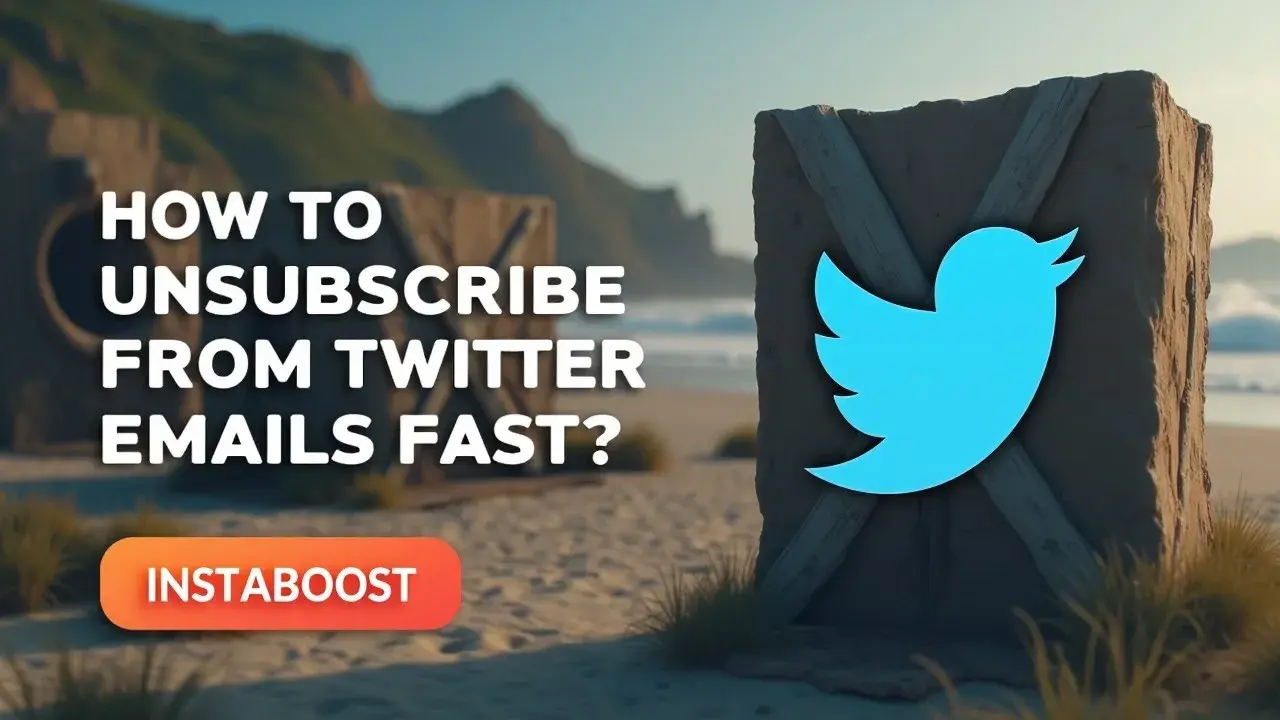How to Unsubscribe From X (Twitter) Emails Fast?
Unsubscribing from X (Twitter) emails is a quick way to give your inbox breathing room and sharpen focus. Review the alerts you actually use, then trim the rest so only helpful notifications remain. Make the change once, and check results after the first week to gauge faster scanning and fewer missed priorities. The smart path is to keep essential updates while reducing noise for measurable clarity.
Cut the Noise, Keep the Signal
If your inbox is doing more work than your brain, trimming Twitter emails is a quick, high-ROI fix that pays off within a week. The goal isn’t to go dark – it’s to match updates to your intent. Some notifications drive real outcomes – password alerts, security notices, DMs from prospects, creator collabs, and genuine replies with retention signals – while others create churn.
The fastest path is simple: use the built-in unsubscribe controls to stop categories that don’t serve your goals and keep the ones that reinforce focus. If you’re running campaigns or using targeted promotion, make the change alongside clean analytics so you don’t lose attribution from email-driven sessions; that’s especially true if you promote content on X and coordinate post timing with remarketing windows.
The fastest path is simple: use the built-in unsubscribe controls to stop categories that don’t serve your goals and keep the ones that reinforce focus. If you’re running campaigns or using targeted promotion, make the change alongside clean analytics so you don’t lose attribution from email-driven sessions; that’s especially true if you promote content on X and coordinate post timing with remarketing windows.
You can still measure lift from posts, ads, and real comments without inbox clutter. For teams, a qualified shared inbox tool can route critical messages like verification and login emails while muting the rest, preserving safeguards and speed. If you rely on weekly digests for discovery, switch to a single, well-timed summary instead of a drip of fragmented alerts – then add a short review ritual and a testing loop to adjust over the first week.
Searching “how to unsubscribe from Twitter emails” will show the one-click link in the footer and the settings path. Both work, and the settings route lets you audit categories in one pass. Bottom line: treat email signals like ad spend – tighten targeting, validate fit, and you’ll free up attention without sacrificing momentum.
Searching “how to unsubscribe from Twitter emails” will show the one-click link in the footer and the settings path. Both work, and the settings route lets you audit categories in one pass. Bottom line: treat email signals like ad spend – tighten targeting, validate fit, and you’ll free up attention without sacrificing momentum.

Why Your Metrics Need More Signal Than Noise
“High engagement” isn’t always a win. Raw counts can spike from low-intent likes, drive-by replies, or novelty follows that never convert, while your inbox fills with Twitter emails that train you to react to noise. What actually compounds is qualified attention tied to retention signals: real comments, DMs from prospects, creator collabs that echo your positioning, and replies from people who return. When you unsubscribe from Twitter emails strategically – not wholesale – you cut false positives and make the right pings easier to read. That keeps the “Cut the Noise, Keep the Signal” promise credible.
Keep security notices, password alerts, and messages that move a deal or collaboration forward, and trim marketing blasts and vanity notifications that clog the scan. If you run paid promotion or use accelerants, pair them with clean analytics and a simple testing loop so you can see whether a notification lines up with actual outcomes – click-through depth, a follow-up DM, or a repeat visit – not just a spike in impressions. Reputable tools and targeted promotion work when they’re matched to intent and measured against benchmarks you’d bet money on, and the temptation to chase surface metrics – whether that’s splashy ad spend or schemes like buy twitter followers for brands – should be weighed against whether those signals correlate with retention and revenue.
The fast unsubscribe path also improves deliverability. Fewer low-value opens mean your high-value alerts avoid spam filters and land on time. Treat this like a weekly hygiene habit – set filters, unsubscribe from categories you never act on, and keep a short list of alerts that protect access or drive revenue. That way, when a genuine reply or partnership invite hits, you’ll see it, act fast, and your “high engagement” finally maps to business impact. If you’re searching for how to unsubscribe from Twitter emails fast, this is the credibility play that makes the click worth it.
Design Your Flex: Calibrate Alerts to Moments That Matter
A strategy that can’t flex isn’t strategy. Treat your Twitter email settings like a portfolio you rebalance, not a toggle you set once and forget. Start by mapping alerts to your funnel. Keep security notices and password emails as safeguards. Keep DMs and real replies because they carry retention signals. Mute low‑intent favorites and novelty follows that inflate raw counts without compounding.
Then layer in timing. If you publish threads on Tuesdays, allow short‑term email pings for replies and creator collabs that day to catch early momentum. Taper those categories the rest of the week so your inbox isn’t training you to chase noise. Pair this with a clean analytics view. Filter by sessions and conversions from “email → Twitter → site” to see which alerts correlate with qualified attention; vanity spikes from tactics such as order likes for Twitter often distort signal without improving downstream quality. If you run targeted promotion or paid boosts, temporarily loosen notifications around campaign windows to capture signals, but only from reputable, high‑fit audiences.
Tighten again after the testing loop. The goal is fast unsubscribe hygiene without going dark. Prune hard where signals are weak, and keep the channels that point to deals, partnerships, or returning commenters. Put a seven‑day review on your calendar to adjust thresholds, because your mix will shift as positioning sharpens. This flexible cadence turns “unsubscribe from Twitter emails fast” into a strategy that pays weekly. You get fewer false positives, quicker scanning, and a higher hit rate on the messages that move outcomes. The non‑obvious upside is behavioral. When your inbox stops rewarding noise, you post and engage in ways that earn real comments and DMs, which compounds both attention and trust.
Hold the Line: Saying No to Noise Is Not Going Dark
You call it strategy. I call it guess and stress. Unsubscribing from every Twitter email can feel clean, but it can also hide the retention signals that actually move the needle.
The better move is simple. You’re not shutting the door. You’re installing a screen. If you mute low-intent favorites and novelty follows, your raw counts might get smaller, but your signal-to-noise ratio climbs.
Replies from people who return, DMs from prospects, and creator collabs stop getting buried. That’s where compounding lives. Unsubscribing fast works when it’s calibrated – keep alerts tied to real comments and genuine replies, cut the rest, and pair the change with clean analytics so you see tighter attribution instead of rolling averages that lie.
If you run paid experiments or targeted promotion, quality email alerts become an early-warning system. You’ll see whether the right cohort is reacting without sifting through drive-by clicks, and it helps separate meaningful engagement from attempts to boost tweet views that inflate vanity metrics. Treat each unsub like a portfolio rebalance – small trims weekly beat a single purge – then check outcomes after seven days. Fewer interruptions, faster scanning, and more time to answer the right people. For teams, route high-signal alerts to a shared channel and archive the rest to keep your testing loop honest without turning off visibility.
If you need broad coverage during a launch, use a reputable digest tool or in-app settings to batch low-value notifications so they don’t splinter your attention. The goal of unsubscribing from Twitter emails isn’t silence. It’s precision. When your inbox stops training you to chase spikes, you start seeing the subtle compounding moves that drive retention and, ultimately, revenue.
Ship the Inbox You’d Hire
This didn’t wrap up – it broke open. That “unsubscribe from Twitter emails” sprint is the first rep, not the finish line, and the aim is a system that compounds without handholding. Set a 14‑day check‑in and judge the portfolio by outcomes: fewer missed DMs that convert, more timely replies to real comments, and cleaner analytics that tie creator collabs or targeted promotion to actual lift. If signal feels thin, re‑enable a surgical alert or two; if you’re testing ways to get more retweets on X, note whether those bursts translate to qualified conversations rather than raw impressions.
If noise creeps back, mute another low‑intent event. Treat paid accelerants the same way. A reputable inbox rule tool or a quality email classifier works when it’s matched to your intent and measured against reply rate and retention signals, not vanity opens. For teams, make the settings repeatable with a saved configuration and a short internal note on what to keep – replies, DMs, mentions from followed lists – and what to trim – favorites from strangers, novelty follows – so new contributors inherit focus on day one.
When a campaign spikes, temporarily relax filters to catch early momentum, then tighten back to baseline. The quiet confidence move is stacking safeguards: route priority senders to a Hot label, archive the rest automatically, and keep a weekly skim folder so nothing mission‑critical dies in a black hole. That’s how you unsubscribe fast without going dark, and why calibration beats absolutism. Done right, your inbox stops being a feed you endure and becomes a performance surface you manage – one that surfaces retention signals, speeds decisions, and supports growth long after today’s settings. If you need a phrase for it, design once, rebalance often, and let the results make the case.















